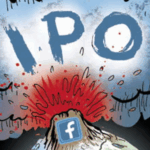 “Data-Driven Thinking” is written by members of the media community and contains fresh ideas on the digital revolution in media.
“Data-Driven Thinking” is written by members of the media community and contains fresh ideas on the digital revolution in media.
Today’s column is written by Adam Heimlich, senior vice president and managing director of HX at Horizon Media. This point-counterpoint between Adam and Emily Del Greco was written in response to the question: What is the future of the open exchange?
Buyers have enough power and publishing is competitive enough that OpenRTB will continue to flourish.
If digital video ad placements are so scarce, why do premium sites need price floors when they auction them?
And why wouldn’t viewable video on a fraud-protected, brand-name domain command in real time the same premium pricing these publishers secure upfront? One hears some complicated answers to this simple question. Programmatic is nothing if not complicated!
But the truth here is simple: Private marketplaces exist to create an illusion of scarcity, and they charge accordingly. Buyers can fly to safety on a whitelist.
The trends affecting exchange media predate the internet. In the early 1990s, ad-supported cable channels were being added by the dozen to cable subscriptions at no extra cost to the consumer. Free alternative weeklies were putting competitive pressure on every metropolitan newspaper. People partook of so many media options, no seller could credibly claim a premium audience. The core value proposition of prime-time TV and the top dailies withered.
It’s only become harder to justify higher ad rates for an audience that can be reached elsewhere. Digital media is never prime-time or ubiquitous. Social sharing divides content from context. User-based targeting deflates the pitch around tentpole sponsorship opportunities.
Buyers aren’t going to forget that the most efficient way to reach any audience is discovered immediately in OpenRTB. There will be always be enough sellers to meet the still-rising demand for real-time open auctions because buyers have money to spend in those. Some of the millions of future grownups currently producing original video content will gladly fill any supply gaps the networks leave.
Understandably, publishers’ ambition for premium ad rates survives. Household-name sellers pull it off by leveraging big buyer relationships and maintaining an appearance of scarcity. Some agencies have happily played along, making deals upfront and earning extra margin by disguising their investments as real-time decisions made on the trading desk. It’s much easier to take an undisclosed markup when the advertiser believes the placements are premium.
Expensive publications also benefit from the “flight to safety” of advertisers concerned about fraud, viewability and transparency. This trend will look like a blip on the radar once marketers who grew up with digital have the balance of power in ad-buying decisions. Modern buyers don’t just trust, we verify.
The only other reason premium pricing continues to exist is actual scarcity. If the adjacency renders your ads more influential, it might be worth paying extra to place them within a fleeting media event, such as a big game or a reality-show finale. This is so rare, online, that it actually has almost nothing to do with how the word “premium” is used every day by digital planners.
Rather, we say “premium” to refer to digital sellers whose primary channel is TV or print. Buyers set up private deals to access inventory publishers withhold from the open exchange to ensure price floors. Assertively, buyers pursue programmatic guarantees to deliver the advantages of both user targeting and upfront purchase in “well-lit” environments.
Advertisers aren’t finding great value, though. Digital-first sellers are better at delivering the audiences being targeted. Collectively, they provide enough real-time value to make guarantees unnecessary.
Deal ID technology is notoriously clunky – it simply can’t be the sell side’s ultimate solution for managing big customers. It can actually seem as if agencies are being punished for their buying power – they do extra work to pay more for audiences the same publisher is selling in the open exchange.
Sellers aren’t giving up, and buyers reliant on size-based advantages remain aligned. The next wave of premium private deals will combine audience targeting, “people-based” measurement and lockdowns on must-see events. It will dazzle those not focused on effectiveness.
Meanwhile, thousands upon thousands more entrepreneurs will try their hand at free, ad-supported publishing. United by open-source protocols with the thousands that came before them, they’ll draw the same audience as establishment publishers and offer the same quality and verification standards via trusted monitoring tools.
That genie’s not going back in the bottle, no matter how hard big sellers push.
Follow Horizon Media (@HorizonMedia) and AdExchanger (@adexchanger) on Twitter.












